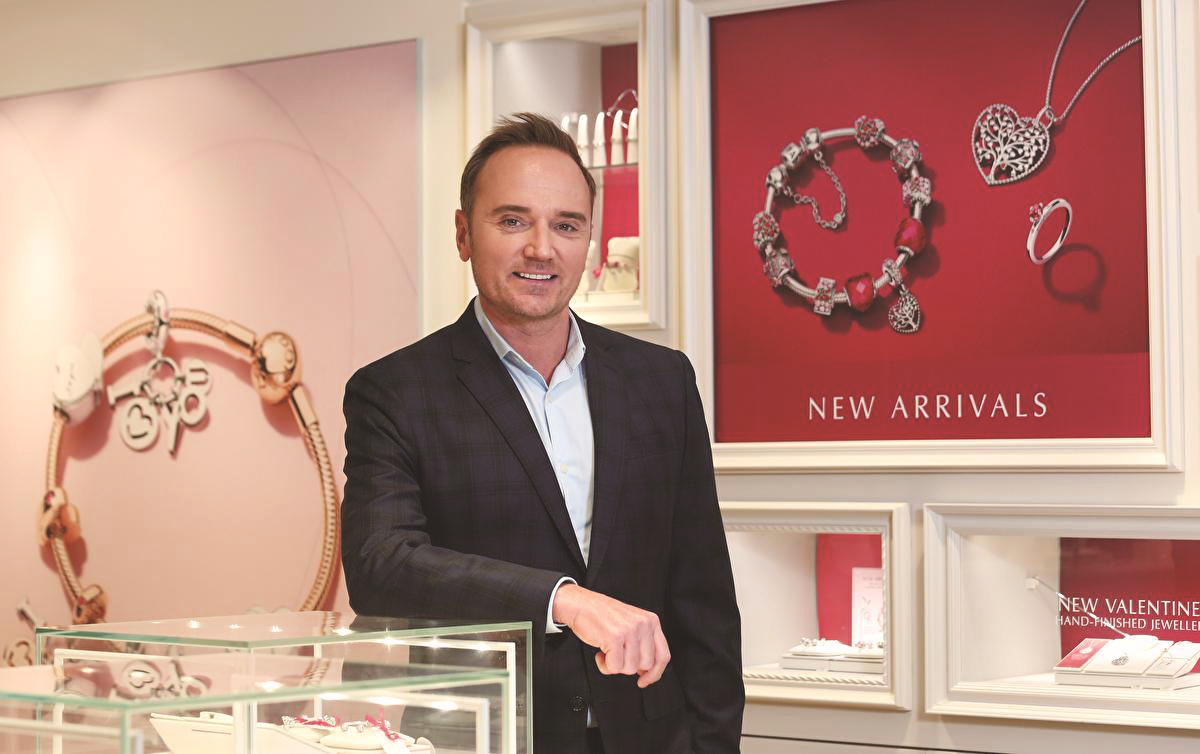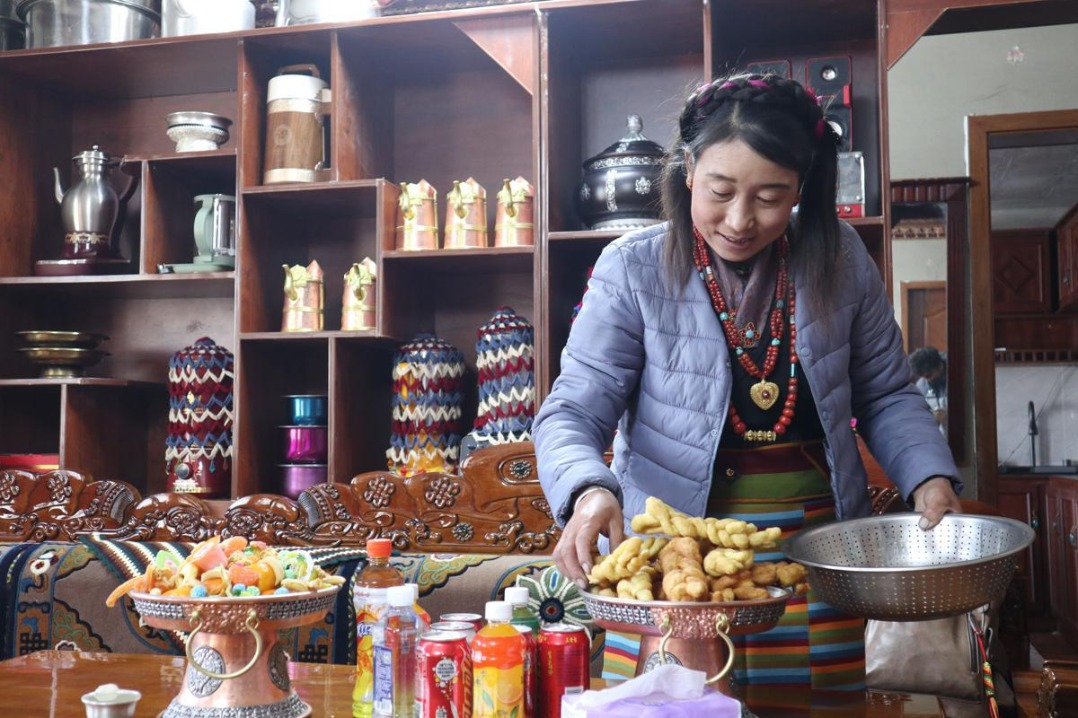A sparkling answer to the big e-boom


The e-commerce boom is not likely to deal a death blow to physical stores, not least the jewelry business. Jewelry chain boss Kenneth Madsen tells Edith Lu that brick-and-mortar stores are here to stay.
At a Pandora store in Harbour City, Tsim Sha Tsui, Kenneth Madsen was meticulously checking on the latest gems collection for the new season as a crowd of consumers milled around picking jewelry as gifts for Valentine's Day and the Spring Festival.
Although e-commerce may have taken the world by storm, seeing and feeling something physically at first hand before buying it is critical, and brick-and-mortar stores, especially in the jewelry trade, will not disappear, says the president of Pandora Jewelry Asia-Pacific.
"When you buy jewelry, you need to touch it, feel it and see how the stone looks and reflects. Also, you have to put it on, match it with your outfit and get advice from sales associates. All these are not available online," Madsen explains.
But, to meet the growing needs of the market, the Danish jewelry manufacturer and retailer — known for its customizable charm bracelets — launched its own e-store on the Chinese mainland in late 2016. At the same time, it entered into an agreement with Tmall — the nation's biggest online shopping platform owned by Alibaba Group Holding.
The double e-commerce approach is quite common on the mainland, as Pandora showcases its full offerings at the e-store and provides about 60 percent of all the products in Tmall, focusing more on the best sellers. The company intends to balance the two channels, but it turned out that revenue from Tmall was bigger than that of the e-store due to its mass traffic and turnover.
Combined sales from the two online channels generated about 10 percent of Pandora's total revenue on the mainland — way above the company's forecast in the first year of operation. The unexpected growth makes the mainland the fastest growing online market globally for Pandora.
However, Madsen sees e-commerce as being more suitable for repeat purchase. He says first-time buyers should visit physical stores, check the bracelets themselves and try them out.
He says Pandora is striving hard to integrate online and offline stores, and believes it's the key to success for any brand at the moment.
The integration works both ways. People can click online, get confirmation from a certain store and collect the products there. Alternatively, they are able to order online and get the items shipped home if they're unable to find the right size at physical stores.
"Physical stores will remain a very important part of our distribution and expansion in China," says Madsen. "We can see from the Tmall data and from our research that when we open stores, our brand awareness goes up."
Pandora entered the Hong Kong market in 2009, followed by the Chinese mainland a year later, seeing Hong Kong as a solid platform for foreign brands to penetrate the market.
Best sellers to HK
"We did not note the opportunities brought by the Chinese New Year at first," says Madsen. "I guess we made the same mistakes as Western companies did when they came to China."
Madsen took the best sellers in the US and Europe to Hong Kong, expecting them to work the same way. However, they failed. The company neglected the cultural diversity in consumers' preference and the market peak period.
After discussing with local agencies, Pandora spent a long time researching on what local consumers really want and began developing products especially suited for the region.
For global jewelry market, the Chinese mainland had accounted for more than 30 percent of the total market value by last year, making it the single largest market, followed by India and the US. Meanwhile, it is driving growth in the Asia-Pacific region, which is expected to stay as the main growth driver for the global jewelry trade over the next five years.
Pandora's sales revenue from the mainland reached 1.59 billion Danish krones ($262.47 million) — an increase of 82 percent in local currency. Growth was supported by the addition of 58 new concept stores in 2017. Another 40 to 50 new stores are due to open every year, boosting the company's 155-store chain this year.
"We've seen a lot of growth coming from new stores," says Madsen. "We focused very much on tier-one and tier-two cities before — from Beijing and Shanghai to Guangzhou and Shenzhen. This year, we will keep going into tier-two and tier-three cities mostly."
Last year, Pandora opened 32 stores in second-tier cities, such as Chengdu, capital of Sichuan province, and Nanjing in Jiangsu province. Twenty-four new cities are on the company's list for this year.
For the Hong Kong market, after seeing rapid growth between 2013 and 2015, Pandora experienced a correction in 2016 — one of the toughest years for the city's retail industry on record amid a global economic downturn and a sharp slump in tourist arrivals.
Strong local demand
The like-for-like sales growth in existing stores was challenged in Hong Kong during that time, but Pandora's revenue still rose 3 percent as the company continued to expand and opened four new outlets in the city.
The company aims to keep the number of stores at 25 or 26 over the years, but has replaced non-performing ones on busy streets with some on the city's outskirts.
Madsen reckons it's a natural adjustment as the local demand remains strong and people living in the suburbs shop in nearby malls.
"As a retailer, you cannot open an X number of stores and then say that's it. We'll continue to do it. Every single year, we will readjust about two to three stores (10 percent) to make sure we have the most optimal footprints and the best offers."
Currently, what concerns Madsen most is that he does not expect the brand to become "too popular".
"Companies that have been through massive growth have to ensure they'll continue to be an attractive brand in the long term, and I believe we will."
To give consumers a degree of freshness, Pandora is expanding into other product lines, such as rings, necklaces and earrings. As its global success was born of charms and bracelets, this category is still, by far, the biggest share of its business, accounting for 80 percent of the group's




































